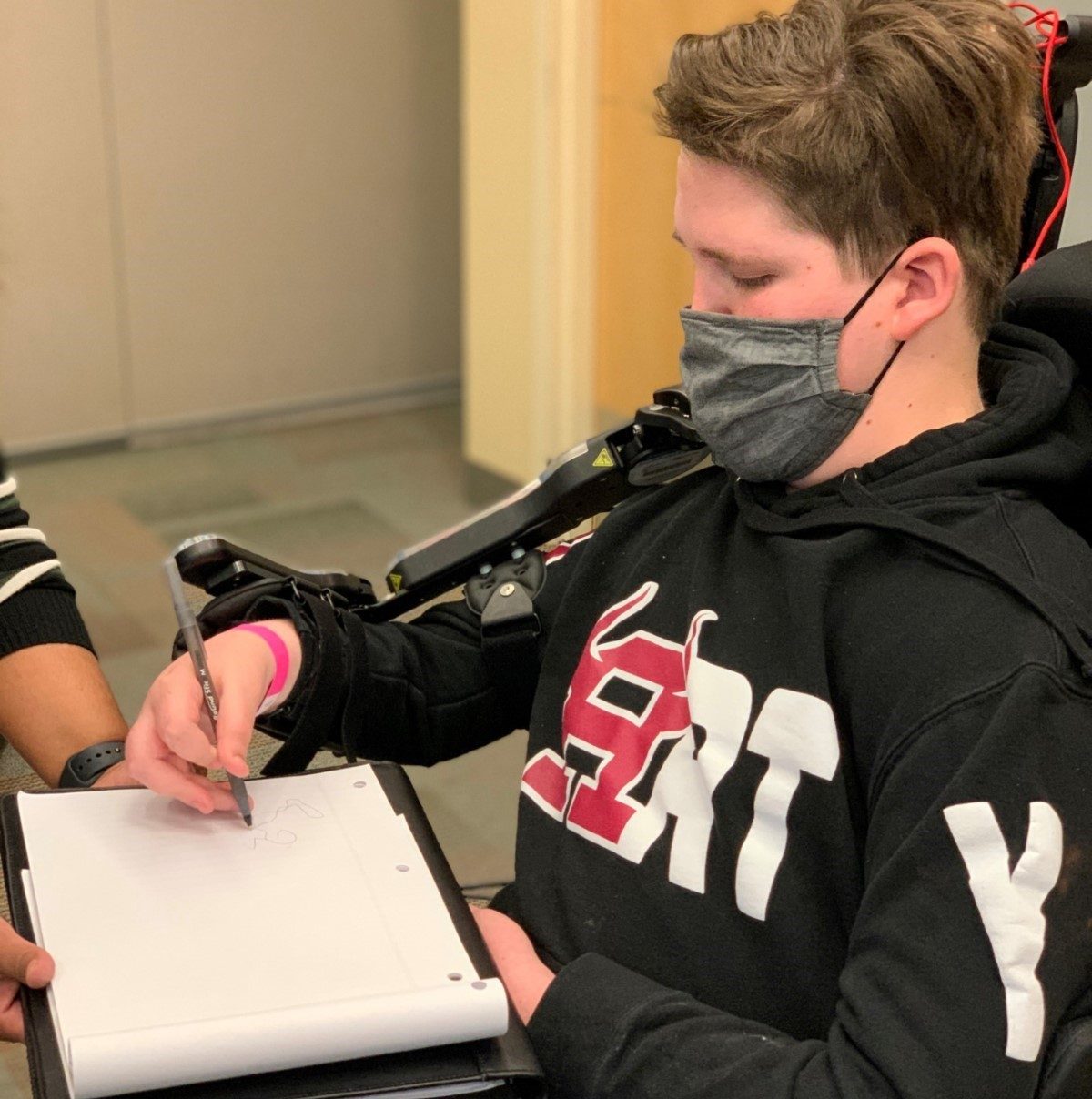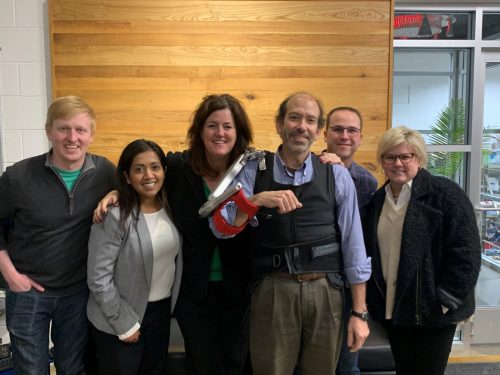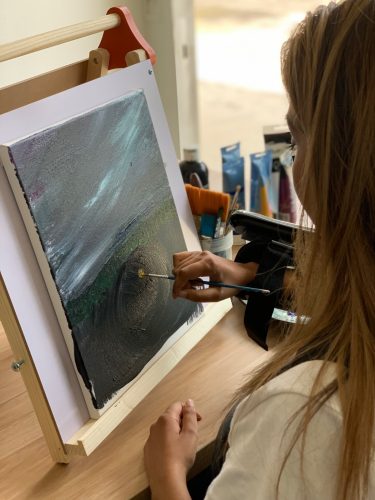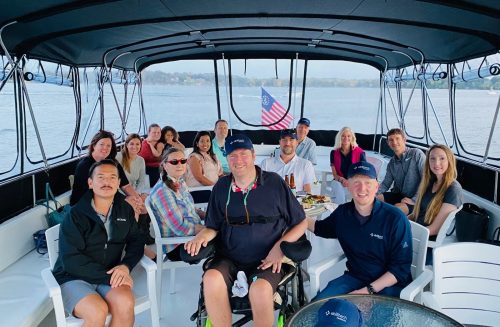In conversation with Praxis SCI Accelerate cohort member Abilitech Medical

AbilitechTM Medical Founder, President & CEO, Angie Zavoral Conley talks with us about the “wheelchair for the arms,” a new standard of care that can help many who lose arm function live more independently.
We’d like to know about how you got to this point with your company. Tell us about your vision.
My father was a pediatric cardiologist and, as a young girl, I did grand rounds with him in the hospital. I love science and I was drawn to helping people, but I didn’t go to medical school. I’ve always been an entrepreneur – even as a kid I had my own businesses.
After college I worked in marketing at Medtronic, the second largest medical device company in the world. That’s where I got my medical device training. Mission and a sense of purpose has always been important to me. It’s an important motivator for me and my team. When you’re wearing three hats and working 60 plus hours a week, failure is just not an option. After Medtronic, I worked with a 3D-printed exoskeleton for children with rare diseases. I saw kids moving their arms, sometimes for the first time. Parents were often brought to tears. When there’s a solution that’s so needed, it spreads like wildfire. My inbox was exploding with messages of people asking for help for themselves and their loved ones living with spinal cord injury (SCI), muscular dystrophy, multiple sclerosis and stroke.
The problem was that after a few weeks almost no one wore the device. It didn’t function as needed because it wasn’t sensitive to human factors, it was powered by rubber bands, the arms floated in the air and the back brace that was used to support it was hot and restrictive. Human factors are an incredibly important piece of our development.
This experience led me to found Abilitech Medical, to create a solution for this huge, unmet need. My vision is to develop a device that will become the “wheelchair for the arms,” a new standard of care for many who lose arm function, to help them live with more independence. We’re helping individuals, their families and their caregivers, producing a ripple effect that positively affects many lives.

President & CEO, Angie Zavoral Conley (third from left) with Scientific Advisor Dr. Mark Gormley, Section Chief for Pediatric Physical Medicine and Rehabilitation, Gillette Children’s Specialty Healthcare (fourth from left) and the Abilitech team.


